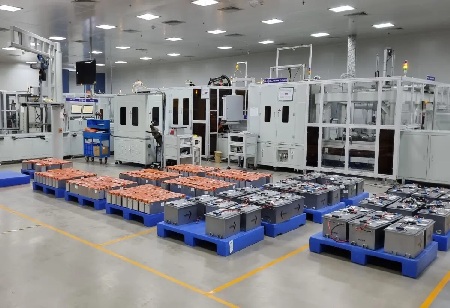Lifespan of LiFePO4 Batteries: Understanding the Longevity of Lithium-ion Technology
Lithium-ion batteries have become a popular choice for many different applications due to their high energy density and long cycle life. However, not all lithium-ion batteries are created equal. LiFePO4 batteries, in particular, have gained popularity due to their excellent cycling performance, long lifespan, and superior safety compared to other lithium-ion chemistries.
Understanding the lifespan of LiFePO4 batteries is essential for those who rely on these batteries for various applications, including electric vehicles, solar energy storage systems, and backup power supplies. In this article, we will explore the factors that affect the longevity of LiFePO4 batteries, as well as tips for maximizing their lifespan.
Factors Affecting LiFePO4 Battery Lifespan
1. Temperature
Temperature is one of the most critical factors that affect the lifespan of LiFePO4 batteries. High temperatures can accelerate the aging process of the battery, leading to reduced capacity and shorter cycle life. On the other hand, low temperatures can also have a negative impact on the battery\’s performance, causing it to lose capacity and reducing the number of cycles it can sustain.
Therefore, it is essential to store and operate LiFePO4 batteries within their recommended temperature range. Typically, the optimal temperature range for LiFePO4 batteries is between 15°C and 25°C.
2. Depth of Discharge
The depth of discharge (DOD) is another crucial factor that affects the lifespan of LiFePO4 batteries. DOD refers to the amount of energy that is drained from the battery before it is recharged. The higher the DOD, the shorter the battery\’s cycle life.
For LiFePO4 batteries, it is recommended to keep the DOD at around 80%. This means that the battery should not be discharged below 20% of its rated capacity. By avoiding deep discharge cycles, the battery\’s lifespan can be significantly extended.
3. Charging Voltage
LiFePO4 batteries require a specific charging voltage to ensure optimal performance and longevity. Charging the battery at a voltage that is too high can cause the battery to overheat, leading to reduced capacity and cycle life. On the other hand, charging the battery at a voltage that is too low can result in incomplete charging, reducing the battery\’s overall capacity.
It is recommended to charge LiFePO4 batteries at a voltage between 3.2V and 3.6V per cell. Charging the battery within this range will ensure that the battery is fully charged without causing any damage.
4. Charge Rate
The rate at which a LiFePO4 battery is charged can also affect its lifespan. Charging the battery at a high rate can cause the battery to overheat, leading to reduced capacity and cycle life. On the other hand, charging the battery at a low rate can result in incomplete charging, reducing the battery\’s overall capacity.
It is recommended to charge LiFePO4 batteries at a rate of 0.5C or less. Charging the battery at a lower rate will result in a longer charging time, but it will also help to extend the battery\’s lifespan.
Tips for Maximizing LiFePO4 Battery Lifespan
1. Store and operate the battery within its recommended temperature range.
2. Avoid deep discharge cycles by keeping the DOD at around 80%.
3. Charge the battery at the recommended voltage range of 3.2V to 3.6V.

4. Charge the battery at a rate of 0.5C or less.
5. Use a quality charger that is specifically designed for LiFePO4 batteries.
6. Avoid exposing the battery to extreme temperatures, water, or other harsh environments.
7. Regularly check the battery\’s voltage and capacity to ensure optimal performance.
In Conclusion
LiFePO4 batteries are an excellent choice for many different applications due to their long cycle life, superior safety, and excellent performance. Understanding the factors that affect their lifespan and implementing the tips outlined in this article can help to maximize their longevity and ensure optimal performance for years to come.
-
 Introduction In recent years, the global push for sustainability has prompted industries to adopt more eco-friendly practices. Warehouse operations, which often involve heavy lifting and extensive use of machinery, have also taken steps towards reducing their carbon footprint. One significant development in this regard is the emergence of electric forklifts powered by lithium batteries. This article will explore how...더 읽어보세요
Introduction In recent years, the global push for sustainability has prompted industries to adopt more eco-friendly practices. Warehouse operations, which often involve heavy lifting and extensive use of machinery, have also taken steps towards reducing their carbon footprint. One significant development in this regard is the emergence of electric forklifts powered by lithium batteries. This article will explore how...더 읽어보세요 -
 In today's increasingly competitive and fast-paced industrial landscape, businesses are constantly seeking ways to enhance efficiency and improve performance. One crucial aspect that often goes unnoticed but plays a significant role in achieving these goals is the use of high-quality industrial power product batteries. Industrial power product batteries are specifically designed to meet the unique energy requirements of industrial...더 읽어보세요
In today's increasingly competitive and fast-paced industrial landscape, businesses are constantly seeking ways to enhance efficiency and improve performance. One crucial aspect that often goes unnoticed but plays a significant role in achieving these goals is the use of high-quality industrial power product batteries. Industrial power product batteries are specifically designed to meet the unique energy requirements of industrial...더 읽어보세요 -
 소개 인산철리튬 배터리라고도 알려진 LiFePO4 배터리는 다양한 산업 분야에서 점점 더 대중화되고 있습니다. 그들은 매우 효율적이고 오래 지속되며 사용하기에 안전합니다. 이 기사에서는 LiFePO4 배터리 사용의 장점에 대해 논의하겠습니다. LiFePO4 배터리 사용의 장점 1. 높은 에너지 밀도 LiFePO4 배터리의 가장 큰 장점 중 하나는...더 읽어보세요
소개 인산철리튬 배터리라고도 알려진 LiFePO4 배터리는 다양한 산업 분야에서 점점 더 대중화되고 있습니다. 그들은 매우 효율적이고 오래 지속되며 사용하기에 안전합니다. 이 기사에서는 LiFePO4 배터리 사용의 장점에 대해 논의하겠습니다. LiFePO4 배터리 사용의 장점 1. 높은 에너지 밀도 LiFePO4 배터리의 가장 큰 장점 중 하나는...더 읽어보세요 -
 When it comes to enjoying the open waters on a boat, having a reliable and powerful marine starting battery is essential. Whether you are planning a day of fishing, cruising, or water sports, a quality battery ensures that your boating adventures are smooth and worry-free. A marine starting battery is specifically designed to provide a burst of power to...더 읽어보세요
When it comes to enjoying the open waters on a boat, having a reliable and powerful marine starting battery is essential. Whether you are planning a day of fishing, cruising, or water sports, a quality battery ensures that your boating adventures are smooth and worry-free. A marine starting battery is specifically designed to provide a burst of power to...더 읽어보세요 -
 In today's world, we rely heavily on electronic devices. Whether it be a smartphone, laptop or tablet, we often find ourselves in situations where the battery life of our devices is running low, and we are unable to find a power source to recharge them. This is where an emergency starter battery comes in handy. An emergency starter battery...더 읽어보세요
In today's world, we rely heavily on electronic devices. Whether it be a smartphone, laptop or tablet, we often find ourselves in situations where the battery life of our devices is running low, and we are unable to find a power source to recharge them. This is where an emergency starter battery comes in handy. An emergency starter battery...더 읽어보세요 -
 Electric forklifts have become increasingly popular in the material handling industry due to their eco-friendly nature and cost-effectiveness. One of the key components that contribute to their efficiency is the lithium battery. Lithium batteries offer numerous advantages over traditional lead-acid batteries, making them the preferred choice for many businesses. In this article, we will explore the advantages of using an...더 읽어보세요
Electric forklifts have become increasingly popular in the material handling industry due to their eco-friendly nature and cost-effectiveness. One of the key components that contribute to their efficiency is the lithium battery. Lithium batteries offer numerous advantages over traditional lead-acid batteries, making them the preferred choice for many businesses. In this article, we will explore the advantages of using an...더 읽어보세요 -
 Introduction: The demand for efficient and high-capacity batteries has been increasing rapidly in recent years due to the growing need for clean and renewable energy sources. In response to this demand, the development of advanced battery technologies has become a key focus for researchers and manufacturers worldwide. One such technology that has gained significant attention is the 12V 100Ah LiFePO4...더 읽어보세요
Introduction: The demand for efficient and high-capacity batteries has been increasing rapidly in recent years due to the growing need for clean and renewable energy sources. In response to this demand, the development of advanced battery technologies has become a key focus for researchers and manufacturers worldwide. One such technology that has gained significant attention is the 12V 100Ah LiFePO4...더 읽어보세요

